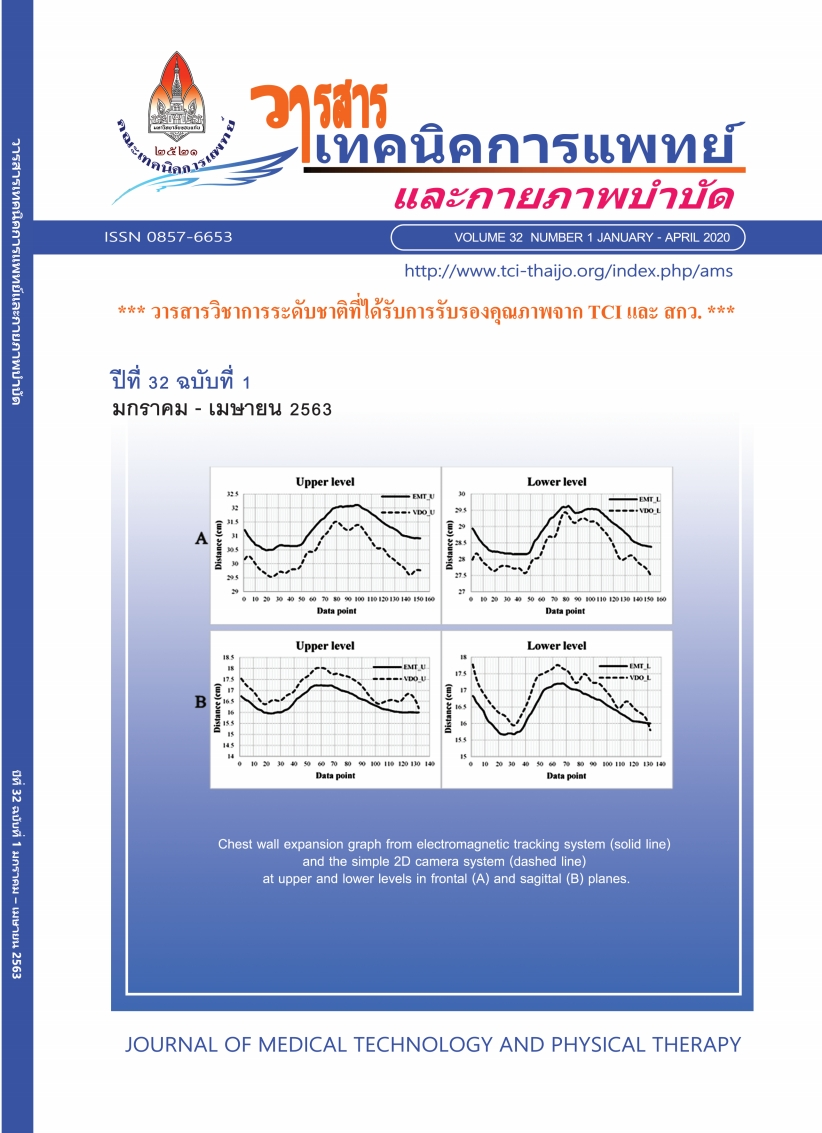The effects of elastic taping and core stability exercises on pain intensity, disability level and lumbar flexibility in sub-acute non-specific low back pain : a randomized controlled trial
Main Article Content
Abstract
Elastic taping (ET) is widely used in sport injuries and patients with musculoskeletal problems, however, the effect of ET is not very clear in patient with sub-acute non-specific low back pain (NSLBP).
The objective of this study was to investigate the combined effect of ET to conventional treatments on pain intensity (PI), disability level (DL) and lumbar flexibility (LF). This study was a randomized controlled clinical trial. Eighty four (36 males and 48 females) patients with sub-acute NSLBP were recruited and were divided into 2 groups. The control group, patients were treated by ultrasound and core stabilizing exercise (CSE), whereas patient of the intervention group were treated by ultrasound and ET. Both groups were treated three times per week within 2 weeks. Visual Analog Scale (VAS) was used for measuring pain intensity. Oswestry Disability Index (ODI) was used for determining functional disability. Modified Schober’s Test (MST) was also used for measuring lumbar flexibility. The results demonstrated that there are significant pain reduction and reducing disability and significant improving in lumbar flexibility in both groups when compared the baseline with the second week and with the fourth week (p<0.001). There are showed better improvement in the intervention group, but there are also significant relief of pain and decreasing disability and increasing in lumbar flexibility between groups after intervention and at the fourth week (p<0.001). In conclusion, ET and US or US and CSE had therapeutic effects similarly for treating patients with sub-acute NSLBP.


